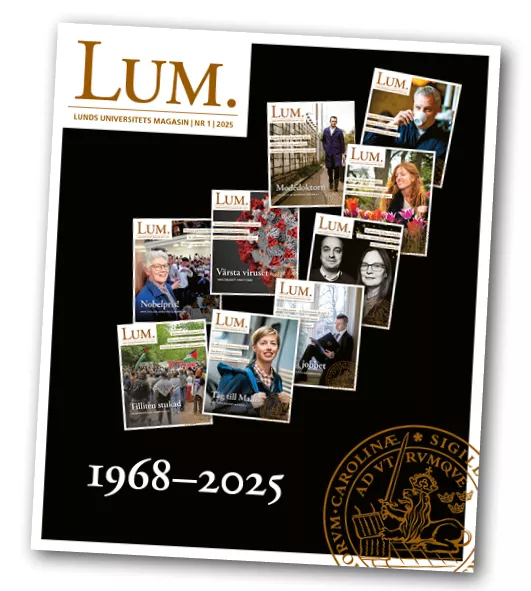It is Monday morning, and the Aurora 23 military exercise is in full swing in southern Sweden. I am here to write an article for LUM, but get roped into the exercise and have to tact like I have been seriously injured. The doctor who attends to me in the surgery tent is Stefan Hansson, by day a professor of Obstetrics and Gynaecology at Lund University and consultant obstetrician at Skåne University Hospital. He is also a captain as a reserve officer in the army and is part of the brigade support battalion’s trauma squad, the first line who take care of the most seriously injured and are tasked with ensuring that we survive until we can receive treatment elsewhere. It is the Göta Logistic Regiment, T2, based in Skövde, who are responsible for staffing the brigade support battalion.
Stefan Hansson trained as a reserve officer before becoming an obstetrician.
“The leadership training I received as a reserve officer was fantastic. When I later became a doctor, I saw lots of similarities between acute delivery and the situations that I have encountered in the military. I have been told that I am a bit military in the delivery room in acute situations,” says Stefan Hansson, who is also camp doctor for the Scouts on large jamborees.
“I think that the University’s motto Prepared for both feels good. It is a privilege to have received the education I have – you also have the opportunity to jump in and make a contribution.”
Knowledge and defense
The motto Ad utrumque paratus, Prepared for both, was adopted when the University was founded in 1666. At the time, Sweden was at war with Denmark, and the students were to be prepared both to gather and distribute knowledge, and also to defend the nation. The current geopolitical situation with the war in Ukraine gives the exercise an extra degree of reality.
“There is a need for people who can cope with working in the primitive conditions that can arise in acute crises. In terms of equipment, the trauma squad and the forward surgical team here are very different to what we have access to in hospital,” says Stefan Hansson, who also has a training role in the exercise.”
A caring leadership
He notes that while military structures are renowned for their strictness and rigidity, in practice they are characterised by a caring leadership.
“We look out for one another in a respectful way. That is something that those of us in academia and healthcare can learn from. It can be difficult being a new registrar or getting into academia as a doctoral student. The competition within the world of research is hard, within the military we rely on each other in a different way.”
“They do not differentiate because we have other titles – we all have to dig if that is what is required, or put up tents and load trucks. A really tough job for an old man of my age!” Stefan Hansson laughs.
Back to the exercise. Stefan Hansson and his team have secured my airways by inserting a thoracic drain with the diameter of a garden hose between my ribs, my abdomen has been opened up and the profuse bleeding from my liver has been stopped by filling my abdominal cavity with bandages and closing it up with a vacuum packing bandage. There are limits to what you can do in the field. In total, you can do three of these operations in a day. The exercise is called off and Stefan Hansson leans over me:
“Now I can recommend that the patient take a shower. The dye is difficult to get off.”
Thank goodness this is only an exercise.
Footnote: Between 17 April and 11 May 2023, the military training exercise Aurora 23 was carried out, one of the largest in Sweden for many years.





